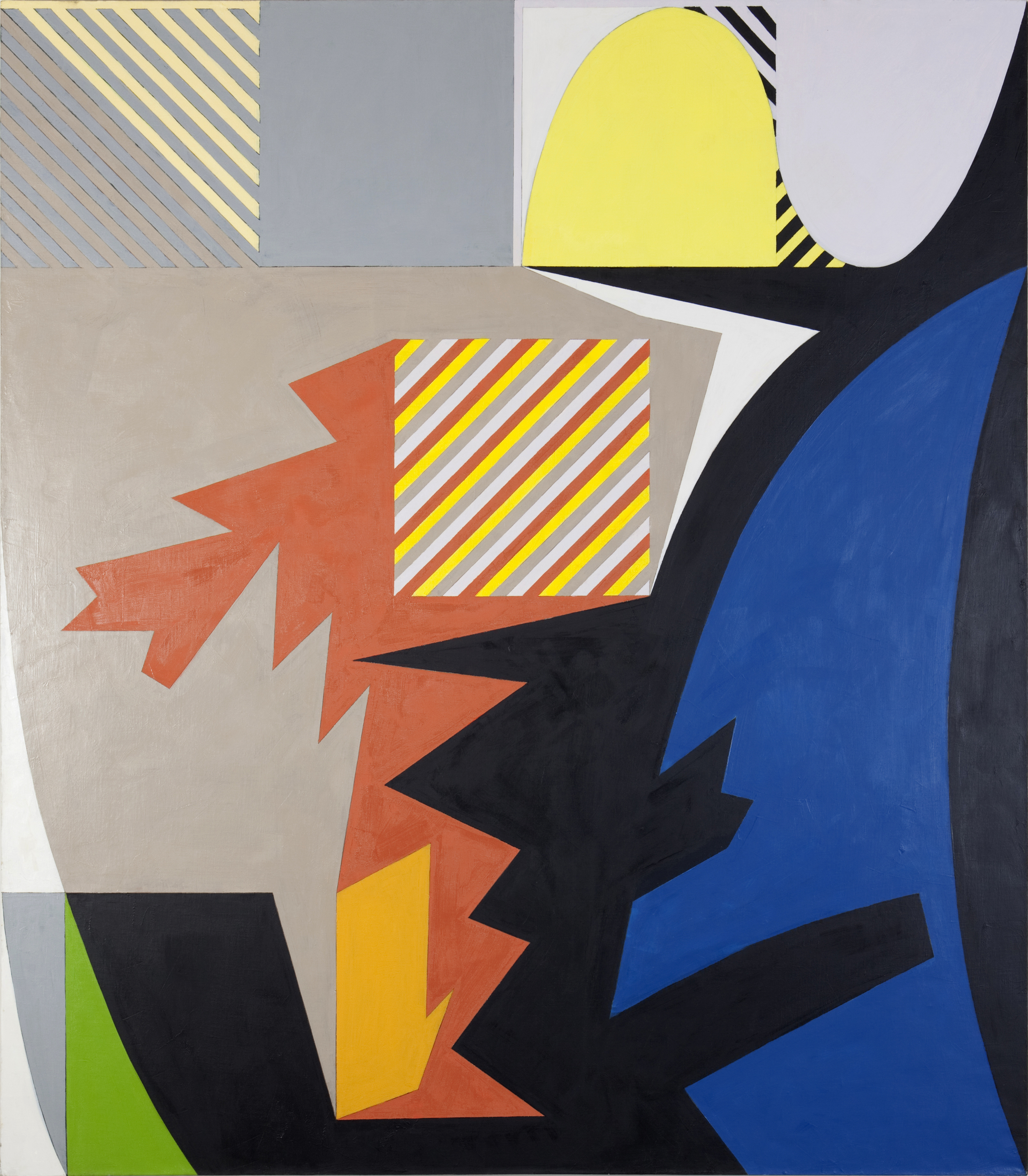The Village Group, mid 1980s
The Village Group paintings are named after villages either in or near which I spent my childhood and early adolescence. They are as you might say ‘conservative’ paintings, in comparison with the works I made for the Borgenicht show or the Getty in the same year, for example. I mean this in the sense that they have a generally naturalistic (British) palette of red and green, and the space is pictorial in a fairly straightforward and recognizable way—as with Some Difference (1986,) which I made a year later and that also has a spatiality we kind of know, but which has quite a different palette from the village paintings. I describe their palette as naturalistic as ‘British’ because it’s full of alizarin crimson and viridian green. We used to be given those as standard issue in art school, and I once suggested that if you banned paintings with those colors in them from the Royal Academy summer show for five years you’d change the face of British painting. Or threaten to make it disappear maybe.
I was forty in 1985 and think that might have something to do with why I made such a wide range of work. It felt like floundering around but not entirely, and in retrospect was a way of finding out what my repertoire actually is or might be. Which turns out to be, or want to be, a bag that contains all known tricks. However ‘conservative’ in one sense, the village paintings also contain in extremis the opposition or alternation, or non-relationship, between the geometric and the atmospheric, and shapes made with a ruler and protractor and areas and shapes that are freely drawn, that has played a bigger and bigger role in my work generally. One may compare areas of More (2010) with what happens in the village paintings, for instance.
The village paintings are in my mind very simple and direct, each one quite different in crucial respects from the other. Groombridge (1985) is mostly made out of a vertical movement in a vertical painting that also makes use of white as both void and form (which also calls to mind the wall at the middle of the painting.) Lamberhurst (1985) is a horizontal painting that makes some use of a horizontal format’s automatic evocation of landscape. Ashford (1985) is a small painting that concentrates attention and is built around circular movement quite unlike the way in which Paddock Wood (1985) does not concentrate attention, but rather involves jumping around at different speeds, and occupies a space slightly larger than the viewer’s. They bring together more than anything the varieties of movement that I had managed to get going in my work as a whole up to that point, and do so very simply, or so it seems now. Then working on them was mostly a clear reminder that paintings like these were automatically deeper than others regardless of what one thought one wanted, raising the question which would become more and more something for me to think about and work with, the involuntary and its unavoidability and fundamental importance.



